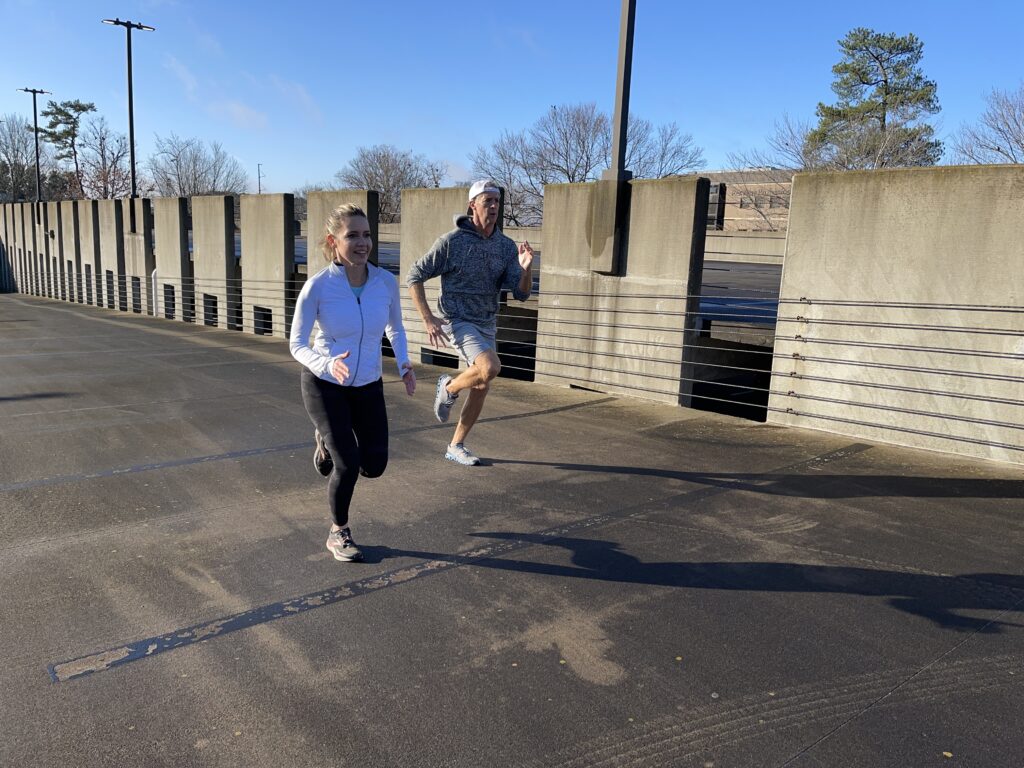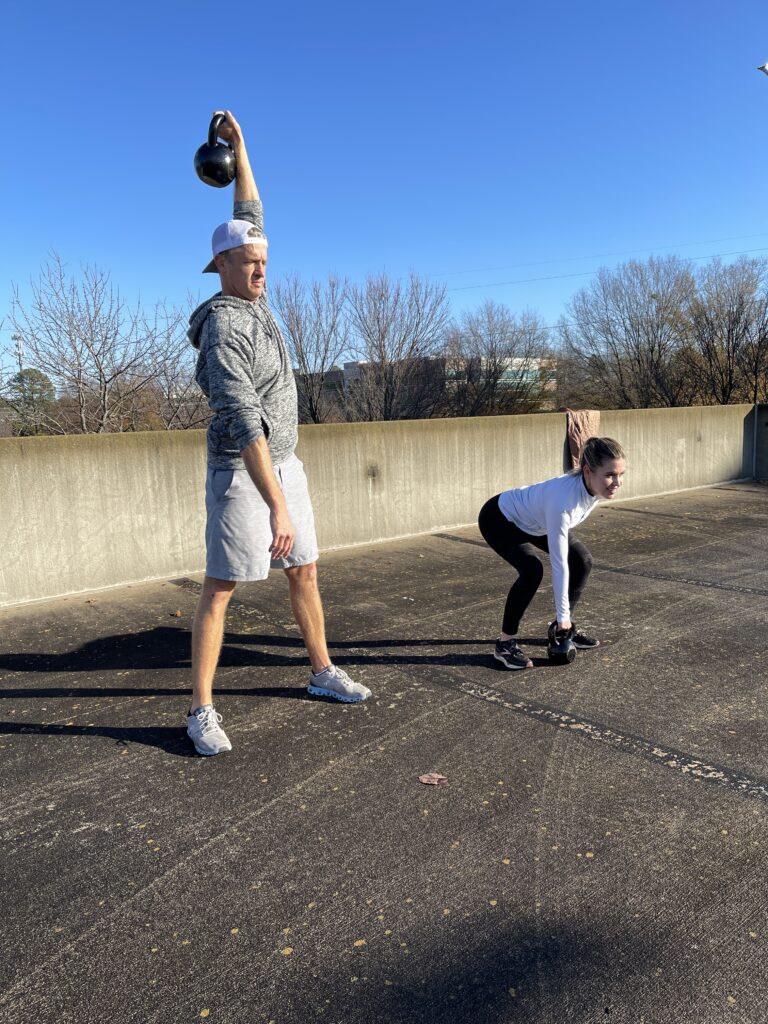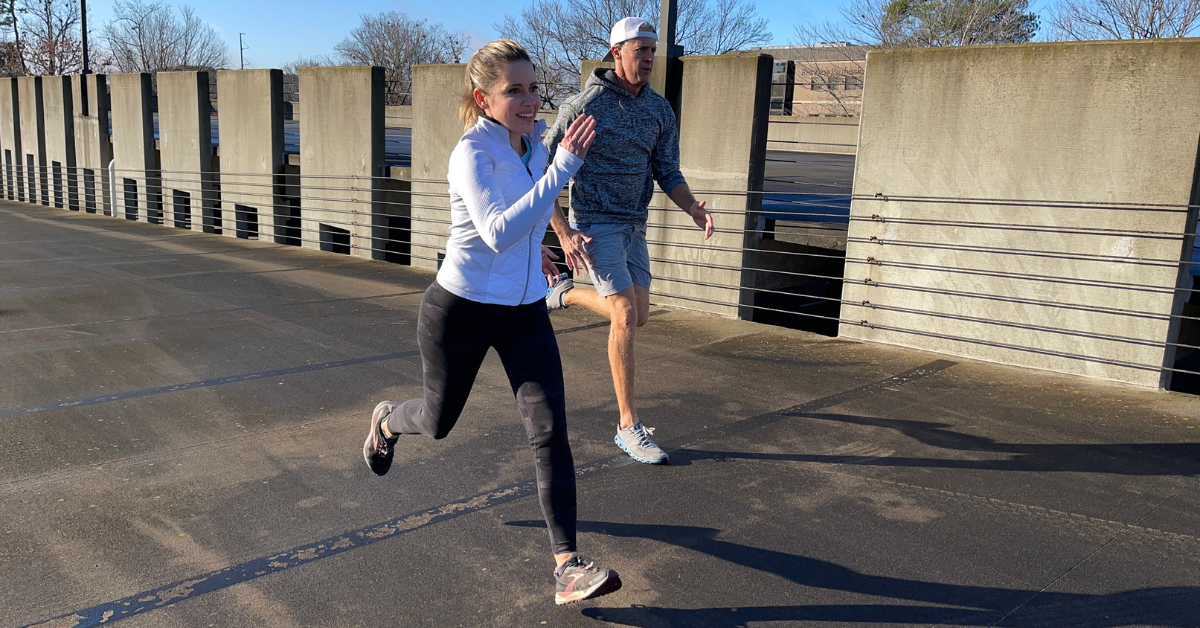What you saw on The Amazing Race: Us showing up out of breath to every single challenge.
What you didn’t see: The crazy long run or mad dash sprint to get there.
There is so much it isn’t possible to include everything on a show like The Amazing Race. As contestants on Season 33, some days of The Race lasted all day, but it all had to be edited into just 46 minutes and include the highlights from every single team. There is one thing that was one of the biggest struggles but you rarely saw it: Running. (They never showed exactly how much we ran.) I get it, watching non-Olympians run through cities isn’t exactly stellar television. But man, did we run.
On that first leg in London, we ran about 5 miles. There were sprints and some sort of mad dash in every episode but on the leg of the dreaded “leave no stone unturned” we ran about 6 or 7 miles over hilly terrain.
Get Ready To Run
Our season was famously halted after the third episode due to the pandemic, so when we went back we had the knowledge on how to be better prepared. As well as building strength and being ready for serious stairs, we knew to be prepared for intense amounts of running. For the record, we felt physically prepared the first time, but we were coming off a pandemic when the show resumed. We had about a month to regain some of our original endurance.
In this clip taken a little more than a month before we set off (again) on The Race, you see Penn adding weight to his run and me just trying to keep up. The rules of the show make it so partners must stay together. He’s a much (much) faster runner than I am so we knew he’d carry most of the weight so I could focus on not slowing us down.
I ended up running with about ten pounds in my pack and we ran about 5 miles, three times a week in the month before the race. Also, under the guidance of the trainer at Chain Effect we added hill sprints to the preparation. These were huge in helping build speed and endurance.
We took to the top level of a typically empty parking garage for a 20 minute “hill sprint” session.
Now Taylor Pope, DPT, FDNP, Owner of Chain Effect is sharing these workouts with you!
Heading For The Hills
Workout by Taylor Pope, DPT, FDNP, Owner of Chain Effect
As a great way to boost Kim and Penn’s cardio recovery and to build strength, speed, and durability against injury, we programmed hill sprinting into their preparation. Hill sprinting is actually a lower impact activity compared to running on flat or down hill surfaces.

The steepness of the hill is not all that important – it should be challenging but not vertical. All different lengths of hills work, but I find it worthwhile to run somewhere between 40-80 yards. Running longer than that tends to overly challenge the ability to maintain form and thus diminish the gains from the workout. Anything shorter can limit your ability to find your groove in your form.
It is important to do a full warm up and even ease into the first couple sprints. See our warm up for the stair workout we posted last week. This workout is best done with a watch and heart rate monitor but it’s not necessary (Kim and Penn didn’t use one). By using a consistent hill and target heart rate, overtime you will be able to do more sprints in the same amount of time as your cardiovascular fitness improves.
If using a heart rate monitor: If you have a heart rate monitor (most smart watches have them), we need to pick a “starting the next sprint” threshold that you will use to know when you start your next rep. I tend to use 140 bpm or roughly 75-80% of my max heart rate. The easiest way to find a good starting point is to subtract your age from 220, then multiply that number by .75-.80 to find your target. For example: I am 42 years old. So 220 – 42 = 178 bpm x .80 = 142 bpm. So, once I get back to the start of my hill, I wait until my heart rate dips just below 142 bpm and then start my next rep.
No heart rate monitor: If you don’t have a heart rate monitor, no problem! When you get back to the bottom of the hill, wait 10-15 seconds (or maybe a tad bit longer if you are huffing hard). If you feel ready to run, go full steam ahead.
As far as form, try to focus on maintaining upright posture and lifting knees and toes up in front of your body. Try to focus on quick turn over and minimal time spent contacting the ground.
The Workout:
- After you are fully warmed up and are located at the bottom of your chosen hill, set your timer for 20 minutes. Begin your first sprint keeping your intensity/effort at around 75-80% and make sure your body feels good.
- Walk or jog back down to the beginning of your hill and check your heart rate. Kim and Penn used the time of the jog back to recover, then got back to sprinting. Just start about 10-15 seconds after reaching the starting point of your hill if you aren’t using a heart monitor.
- Repeat for 20 minutes, or until you are no longer able to run with good form.
- Once you have completed this once or twice, it can be fun to shake it up with different speed or power exercises in between sprints. For instance, we would often have Penn and Kim perform kettlebell swings, snatches, burpees in between hill sprints.

Stay tuned for more next week on our Amazing Race workout series. If you missed last week, you can find it here.




